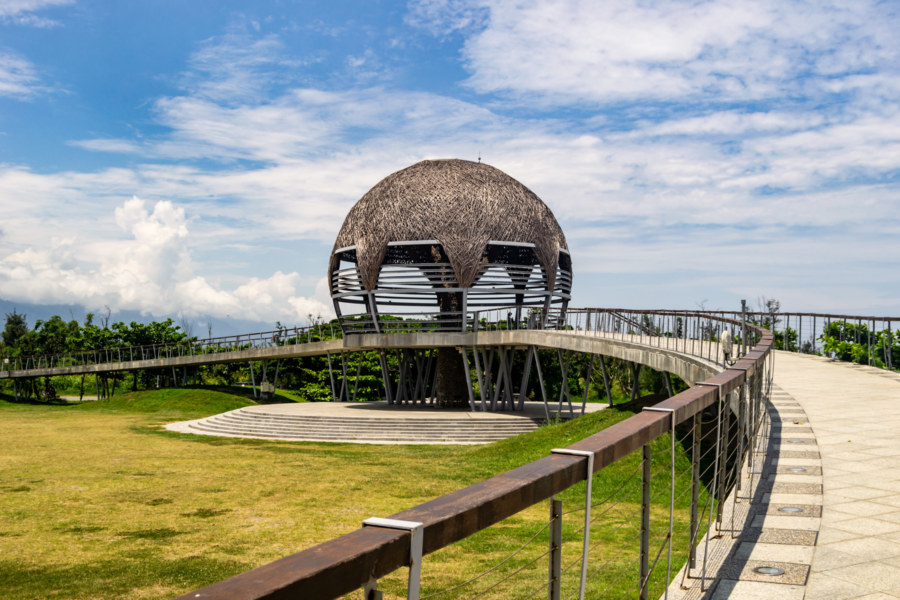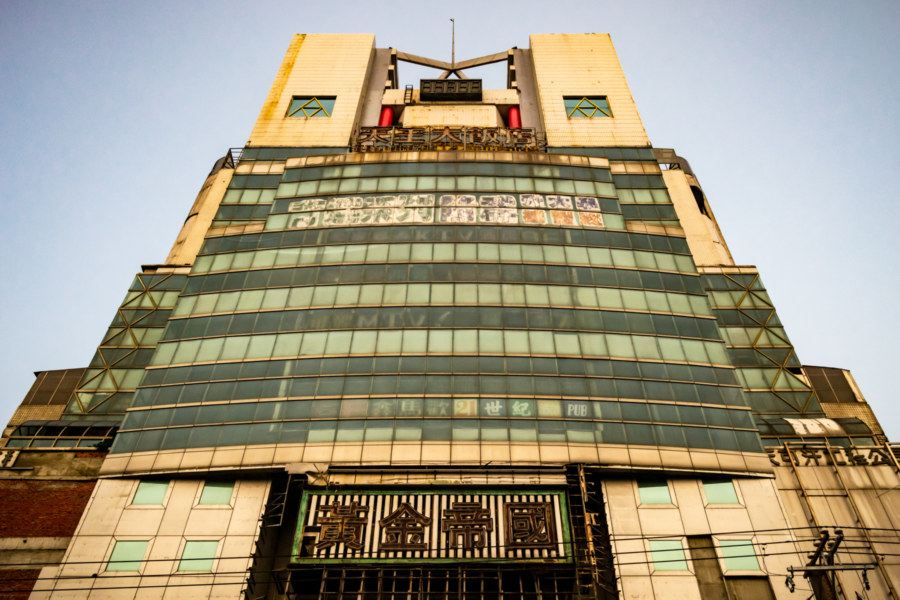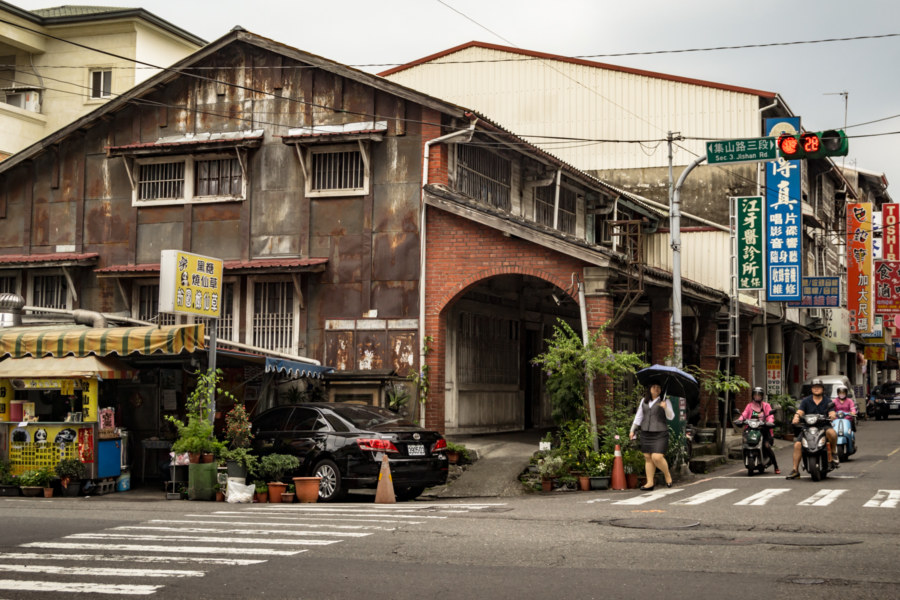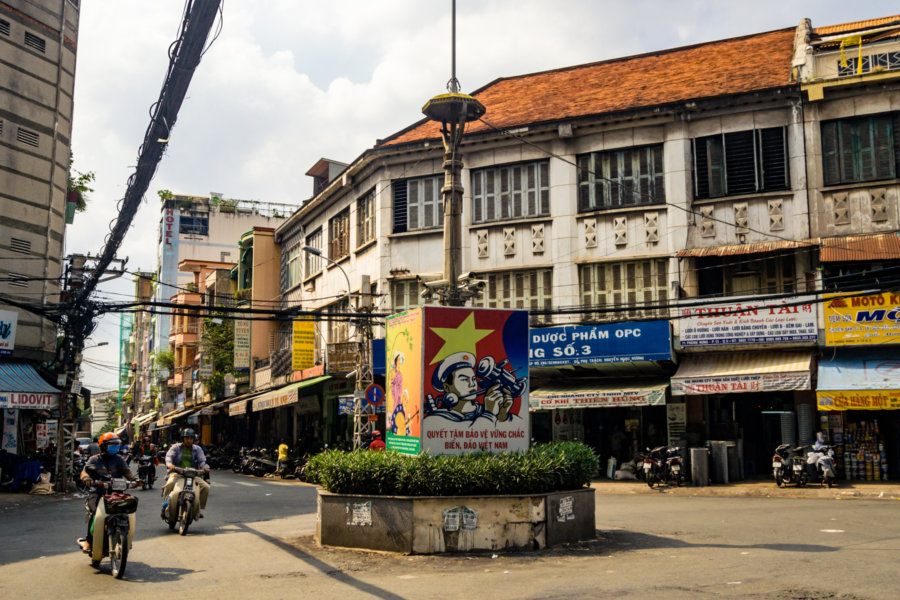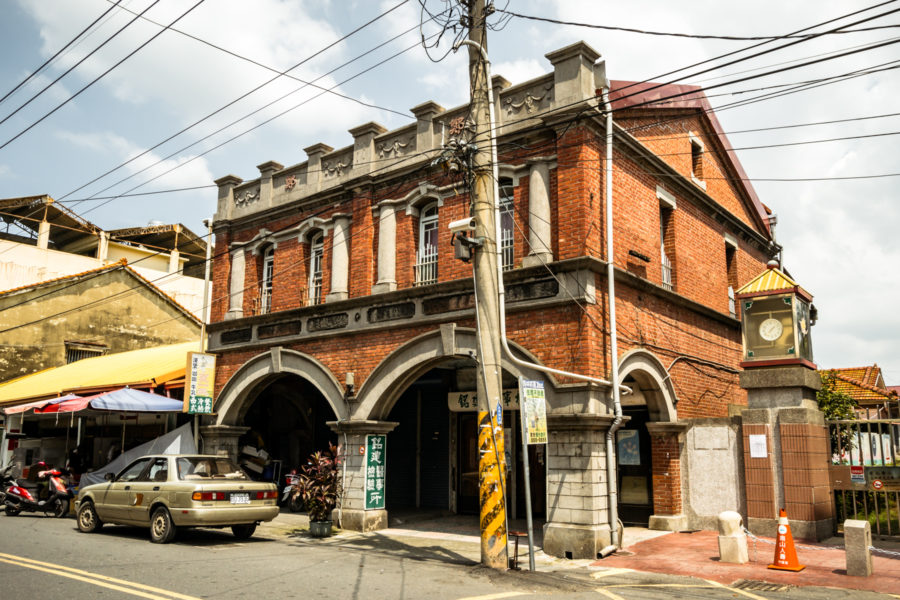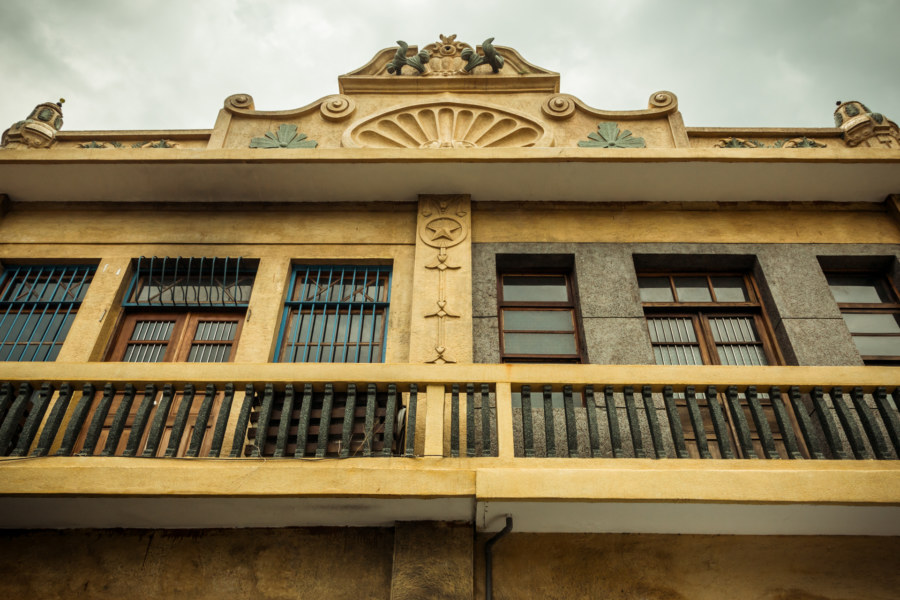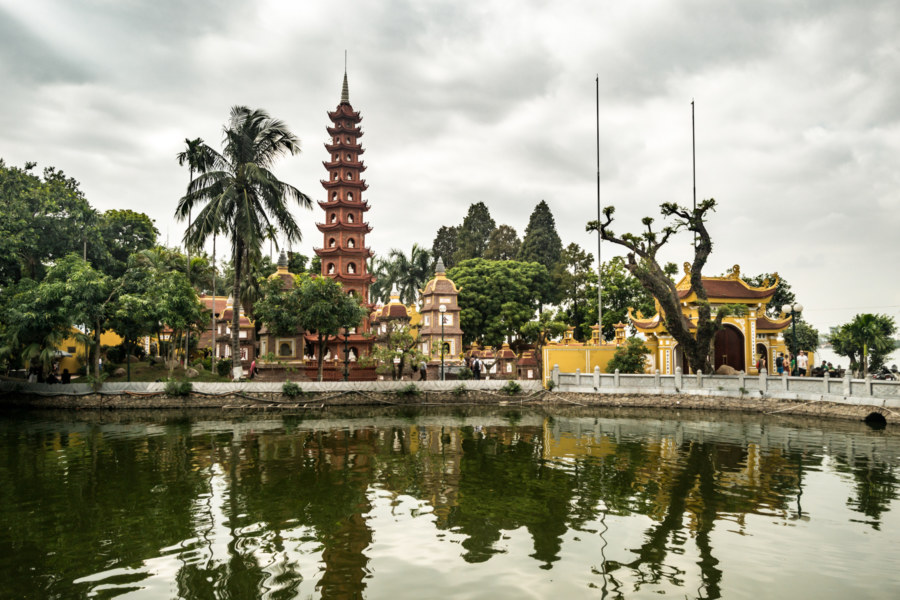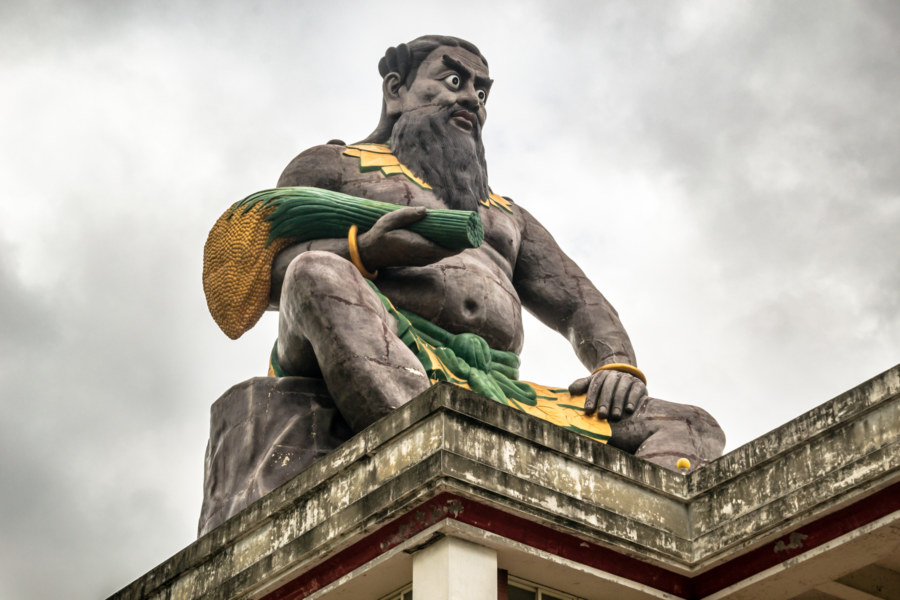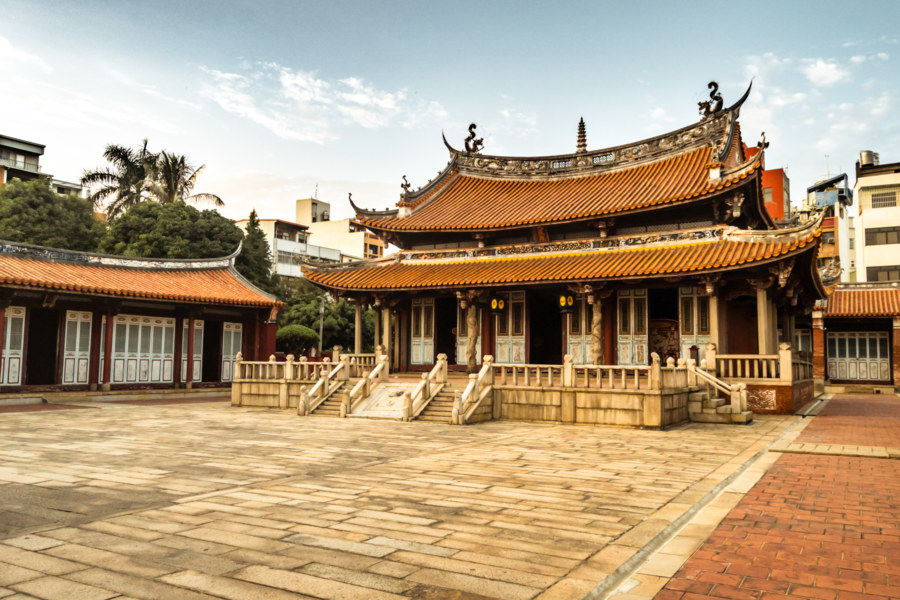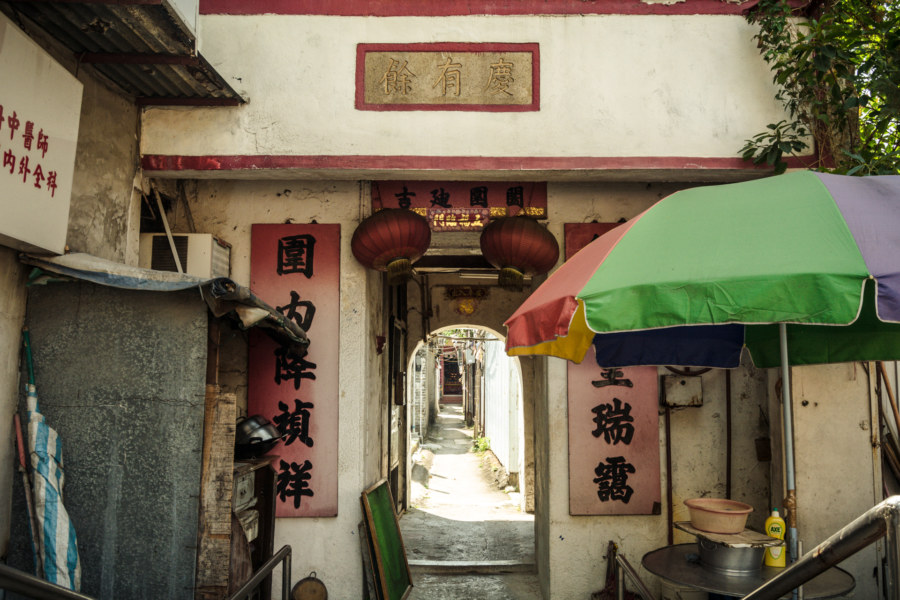This entry documents my final day of riding on a bicycle trip down the Huadong Valley in 2018. I began with a short yet eventful spin around Taitung City, the administrative capital of Taitung, and headed southwest across the alluvial plains before curving back to catch a train bound for Taipei in the afternoon. I already introduced the history, geography, and culture of Taitung City in this post from a previous visit in 2015, so I’ll focus on specific sites I visited on this particular trip.
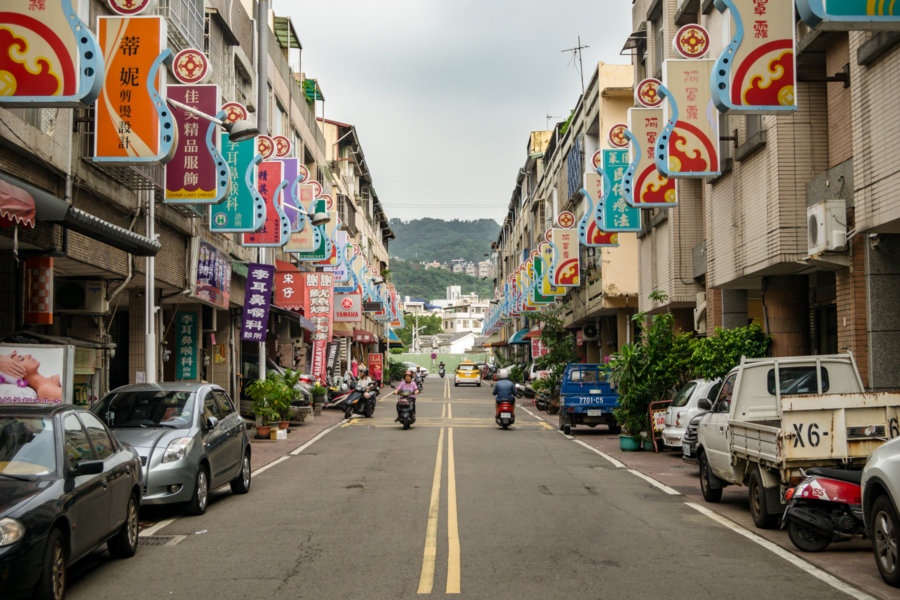
Down on the streets. See also: urbanism.
Adjacent Terms
Postcards From Yuanlin 員林明信片
Yuanlin is a modest settlement of approximately 125,000 residents located on the Changhua Plain (彰化平原) in eastern Changhua, Taiwan. It was formerly the most populous urban township in the nation, but Yuanlin was upgraded to a county-controlled city in 2015, second only to the administrative capital, Changhua City. Considerable work has been done in recent years to improve the urban environment of Yuanlin, and it feels like one of the few places between Taichung and Tainan that isn’t falling into disrepair and emptying out. That being said, urban decay remains widespread in Yuanlin, and there are many interesting ruins worth exploring before they disappear. For students of city planning and development this compact city also has quite a lot to offer—and in this post I aim to introduce some of its more intriguing features, mainly drawing upon photographs from 2013 to 2015, when I was spending significant amounts of time in the area.
Postcards From Zhushan 竹山明信片
Zhushan (literally “Bamboo Mountain”) is a historic yet obscure township in southwestern Nantou mainly known for cultivating tea and bamboo. The town itself is one of the oldest in central Taiwan but it hardly feels that way. Many of Zhushan’s most historic structures were destroyed or damaged beyond repair in the devastating 921 Earthquake that struck in 1999, which is why its “old street” is lined with modern buildings. Most travellers pass through Zhushan on the way to attractions deeper into the rugged interior of Taiwan without sparing it a second glance—but I stopped for a closer look in the summer of 2017 while on an impromptu road trip. After staying the night in a sleazy love motel never meant for sleep (there was no way to switch off the lights) I wandered around in the morning haze, capturing traces of Zhushan’s history as it disappears into memory.
Postcards From Cholon
Cholon is a historic Chinatown west of old Saigon in Ho Chi Minh City, Vietnam. I visited the area on three occasions in 2017, intent on wandering around and capturing some pictures from the streets. Previously I published an extensive report on the Chinese temples of Cholon, including some detail about the history and demographics of the area, so I won’t repeat myself in this post. Instead, I’ll let the photos do the talking this time around…
Postcards From Ershui 二水明信片
Ershui is a rural township located in the southeastern corner of Changhua, bordering Yunlin and Nantou. Ershui Station 二水車站, constructed in 1935, is the primary point of transfer between the Main Line 縱貫線 of the Taiwan Railway Administration (TRA) and the Jiji Line 集集線, a tourist railway leading into the interior. Ershui, which literally means “two water”, is named after the Bābǎo Canal 八堡圳, an extensive system of artificial waterways still responsible for irrigating much of the Changhua Plain 彰化平原 three centuries after it was devised. During the Japanese colonial era this small town prospered as a center of woodworking while farmers in the countryside cultivated bananas, grapes, guava, and tobacco, among other crops. Nowadays it is mainly known as a sleepy stopover on the way to parts beyond—but a closer look will reveal several points of interest for anyone curious about Taiwanese history, architecture, and vintage style.
Postcards From Xiluo 西螺明信片
Xiluo is a small historic town on the south bank of the Zhuóshuǐ River 濁水溪 in Yunlin. It emerged as an important center of trade in central Taiwan during the Qing dynasty era and continued to prosper into the early 20th century under Japanese colonial rule. Disaster struck in 1935 when the devastating Hsinchu-Taichung Earthquake ripped through north-central Taiwan, reducing much of Xiluo to rubble. Colonial authorities and the local gentry worked together to rebuild, taking the opportunity to completely remodel the main commercial thoroughfares with an intriguing blend of influences from Baroque Revival, Art Deco, and Modernist architecture. A short stroll down Yánpíng Old Street 延平老街 reveals that many of these unique shophouses and commercial buildings remain standing today.
Postcards From Hanoi
Gathered here are around forty of my better photographs from a five day stay in Hanoi, Vietnam, in November 2016. All of these images were captured while idly wandering around the famous Old Quarter and its environs. I was not particularly adventurous on this trip but I still managed to find plenty to feast my eyes upon—and the food and coffee certainly lived up to expectations! I also found it interesting to apply some of my growing knowledge of East Asian culture gleaned from these years of living in Taiwan. Each photo is annotated with onward links to more information should anything pique your interest.
A Short Ride Around Western Taoyuan
Last October, while living in Zhongli, I ventured out into the countryside for a random bicycle ride on Halloween. Like most of my rides I didn’t have a route planned or anything, only a general intention of checking out the obscure Fugang Old Street (富岡老街) about 15 kilometers west of the city. Along the way I followed my intuition (with a little help from Google Maps) and captured photographs of anything interesting and unusual I came across. Featured here are more than two dozens pictures from this ride through parts of Zhongli, Xinwu, Yangmei, and Pingzhen in western Taoyuan.
Postcards From Changhua City 2 彰化市明信片二號
Not long after moving to the administrative capital of Changhua in 2014 I published a collection of photographs entitled Postcards from Changhua City. All of the photos in that post were shot in my first few months of residency but I ended up staying for half a year. In that time I gathered more than enough material for a sequel while making my daily rounds. So here it is: more photos from my time in Changhua City, a historic town in central Taiwan. As before, additional information and links are included in the caption for each photo, where available.
Nga Tsin Wai: The Last Walled Village of Kowloon
Nga Tsin Wai Village 衙前圍村 is widely known as the last walled village of Kowloon. Located not far from the former location of the infamous Kowloon Walled City 九龍城寨, the village traces its history back to the 1352 founding of its modest Tin Hau Temple 天后宮. It was fortified in 1724 to defend against bandits and pirates but has, in modern times, lost the moat, walls, and watchtowers that once protected residents from harm. As the very last of its kind in the urban heart of Hong Kong it has become a flashpoint for conflict between the Urban Renewal Authority and the many activist groups and citizens passionate about preserving what remains of Kowloon’s cultural heritage.
